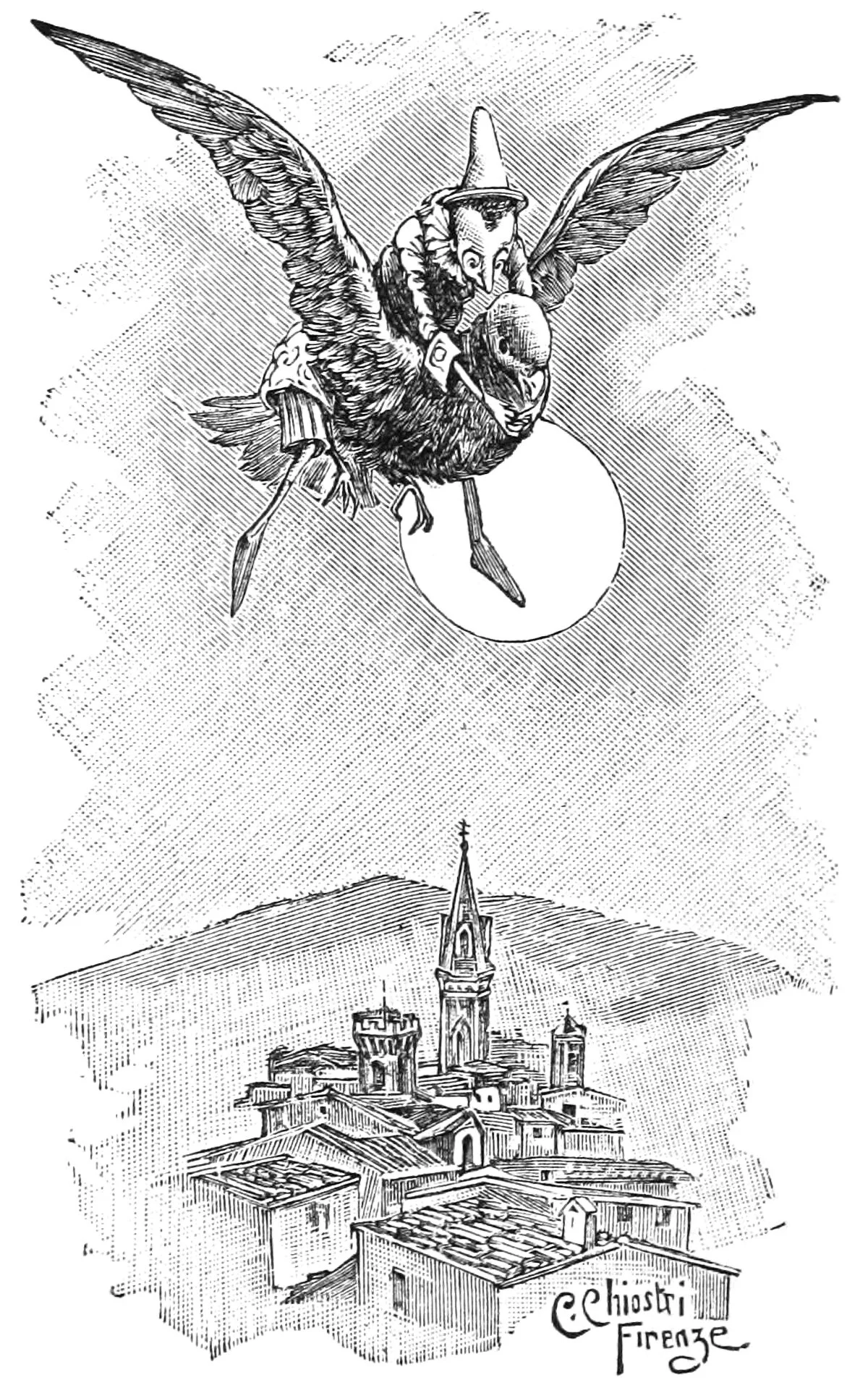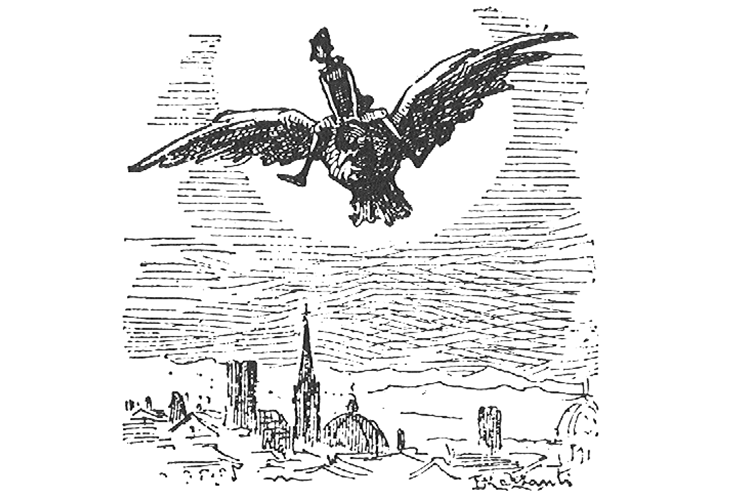Pinocchio’s Feathered Steed
Illustration by Carlo Chiostri from 1902, showing Pinocchio flying high above a town on a bird’s back.
Folklore and fantasy are full of references to the power of flight. These references usually take one of two different forms. The first are characters who can actually fly, and the second are characters who fly by means of another creature. Some examples of the first are fairies, angels, cherubs, and seraphs, among many others. The illustration above shows an example of the second. It’s from Carlo Collodi’s 1883 children’s book The Adventures of Pinocchio, when the titular character hitches a ride on the back of a giant dove.
Pinocchio’s flight occurs in Chapter 23. At this point in the story, Pinocchio and his father Geppetto are both searching for one another. Pinocchio is mourning the death of the Blue Fairy in the forest when a dove greets him. The dove tells Pinocchio that Geppetto is at the sea shore building a boat, and offers him a ride there. Pinocchio jumps on the dove’s back and off they go. While in flight, Pinocchio is quite excited until he decides to look down. This frightens him, causing him to grip the dove’s neck with fear. As the quote goes, he clutched wildly at the neck of his feathered steed. The two continue their flight and make it to the seashore, completing the thousand-mile journey. They are too late to reach Geppetto, however, and the chapter ends with Pinocchio jumping in the sea to swim after his father.
Illustration by Enrico Mazzanti from 1883, showing Pinocchio flying high above a town on a bird’s back.
Pinocchio’s initial elation followed by fear is a common response to flight. Humans have an innate need to escape the surface of the earth, but the reality of lifting off the ground is dangerous. Fear of heights and falling are common for us, but the drive for flight usually overpowers them. When Pinocchio looks down and realizes just how high he is, reality sets in and fear replaces his happiness. This duality is something all of us can relate to, and Collodi does a good job of including it in the story.
Check out other posts about other examples of verticality from literature.
Story referenced from Collodi, Carlo. The Adventures of Pinocchio. Translated by Walter S. Cramp. Cambridge: Ginn & Company, 1904. 104-111.


